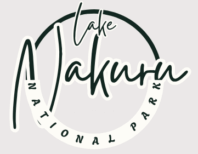Baboon Cliff is the most iconic viewpoint attraction inside Lake Nakuru National Park, offering panoramic aerial-style views of the lake, flamingo belts, acacia forests, and sweeping Rift Valley escarpments. It is one of the most photographed and most visited landmarks in the park — a must-stop for safari travelers, photographers, bird lovers, and families.
Where Is Baboon Cliff Located?
- Western side of Lake Nakuru National Park
- Elevated high above the lake shores and rhino plains
- Easily accessible on morning or afternoon safari circuits
- Reached via the Baboon Cliffs/Out of Africa scenic loop
Why Baboon Cliff Is a Must-Visit
✅ Best viewpoint in the entire park — full panoramic 180° Rift Valley views
✅ Ideal for flamingo, pelican, and lake-wide photography
✅ Safe, elevated picnic stop — with proper parking and rest areas
✅ Frequent sightings of olive baboons (thus the name)
✅ Golden light conditions in late afternoon / sunset time
✅ Accessible in 2WD & 4×4 safari vehicles
What You Can See from Baboon Cliff
- Lake Nakuru’s alkaline shoreline — often glowing pink with flamingos
- Large herds of buffalo & rhinos grazing on the plains below
- Birds of prey like Verreaux’s eagles soaring at eye level
- Great Rift Valley escarpment stretching endlessly in the distance
- Yellow fever tree forests and rolling acacia woodlands
- Perfect vantage for sunrise or sunset photography
When to Visit Baboon Cliff (Best Time of Day)
| Time of Day | Why It’s Ideal |
|---|---|
| Late Morning (10–11AM) | Great lighting & flamingo movement |
| Afternoon (3–5PM) | Golden light, shade, Rift Valley visibility |
| Sunset | Stunning sky colors, iconic Rift Valley silhouette |
| NOT dawn | Still beautiful, but flamingos less visible in low light |
Wildlife Around Baboon Cliff
Although it’s mainly a viewing & photography spot, the area is known for:
- Olive baboon troops (often seen near the cliff edges)
- Rock hyrax sunning themselves on boulders
- High altitude raptors (eagles, vultures, falcons)
- Occasional giraffe, impala & eland movements below
- No predators typically at the cliff itself, but lions/leopards frequent nearby woodland zones
Facilities at Baboon Cliff
- ✅ Small designated picnic area
- ✅ Parking bay for safari vehicles
- ✅ Raised viewpoint platform (no dangerous drops if supervised)
- ✅ Occasionally park rangers on duty
- ❌ No restaurant or cafe — bring your own snacks/picnic
- ❌ No restroom (nearest facilities at park gates or lodges)
Safety Tips
- Stay inside designated viewing areas — the cliff edges drop steeply
- Avoid feeding baboons — they can become aggressive if encouraged
- Hold cameras, food, and bags securely — baboons are opportunistic
- Supervise children closely at all times
- Keep a respectful distance from wildlife — they are still wild animals
Ideal Safari Route That Includes Baboon Cliff
Most visitors stop here during the afternoon section of their safari, usually on this sequence:
Rhino Sanctuary → Lake Shore Flamingo Belt → Fever Tree Forest → Baboon Cliff (Scenic Break)
This provides a wildlife-heavy morning, followed by a photography-heavy afternoon — a perfect rhythm.
Frequently Asked Questions
Is Baboon Cliff safe?
Yes — it is a designated park viewpoint with vehicle parking and ranger presence. However, visitors must still be cautious, especially with baboons.
Do you need 4×4 to reach it?
No — the roads are generally suitable for standard safari vans except during heavy rains, when 4×4 is highly recommended.
Is it open all year?
Yes — Baboon Cliff is open year-round within park opening hours.
Best camera lens to bring?
- Wide-angle lens (14–35mm) — for epic landscape shots
- Telephoto lens (100–400mm) — for flamingos, rhinos & wildlife below
In Summary — Why Baboon Cliff Is Unmissable
| Feature | Highlight |
|---|---|
| Best for | Photography, scenic views, picnic stop, flamingo landscapes |
| Vibe | Quiet, peaceful, world-class panoramic lookout |
| Access | Easy via western loop road — ideal for private or guided safaris |
| Duration | 15–45 minutes stop, depending on photography/picnic time |
